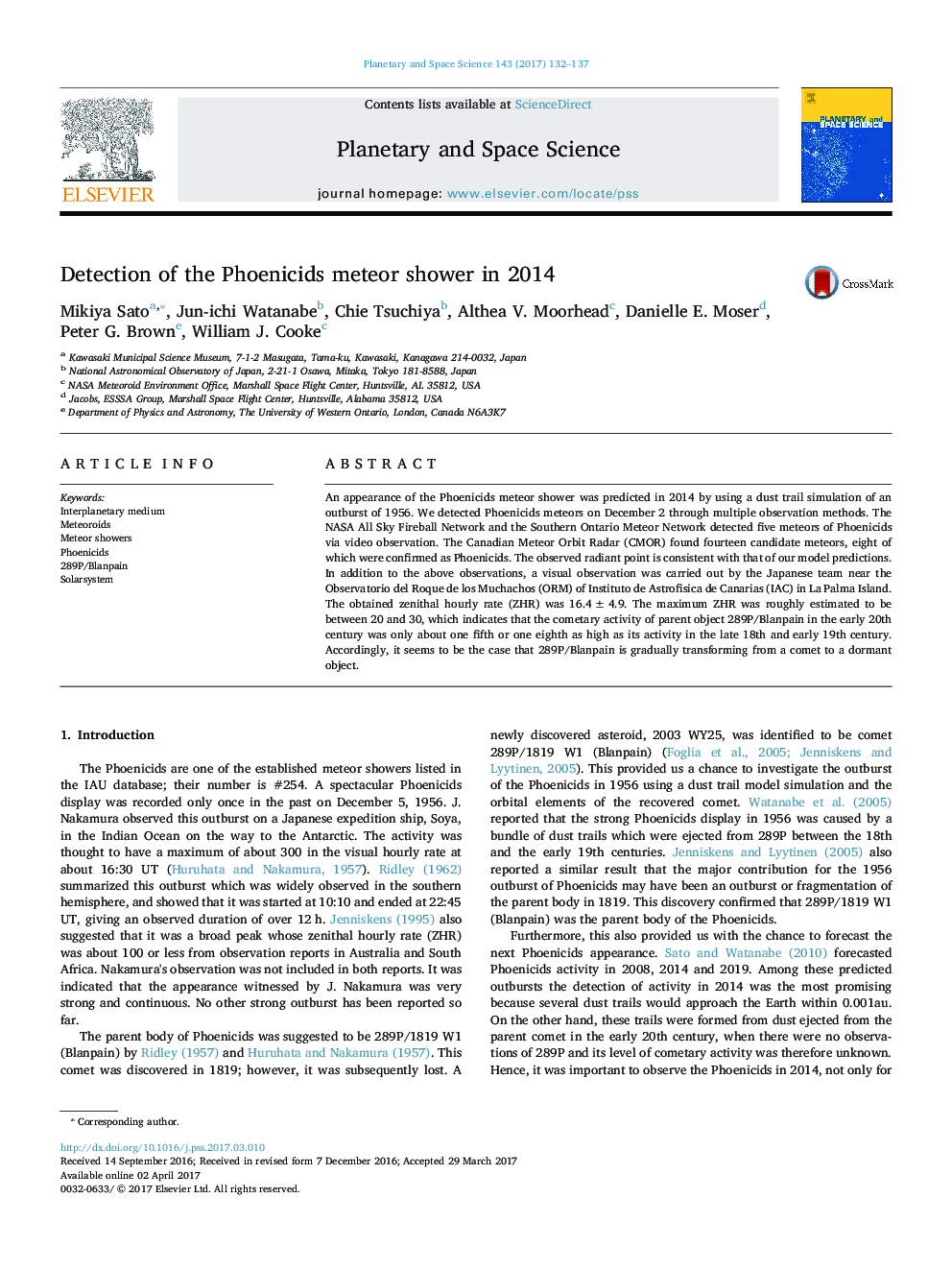| Article ID | Journal | Published Year | Pages | File Type |
|---|---|---|---|---|
| 5487996 | Planetary and Space Science | 2017 | 6 Pages |
Abstract
An appearance of the Phoenicids meteor shower was predicted in 2014 by using a dust trail simulation of an outburst of 1956. We detected Phoenicids meteors on December 2 through multiple observation methods. The NASA All Sky Fireball Network and the Southern Ontario Meteor Network detected five meteors of Phoenicids via video observation. The Canadian Meteor Orbit Radar (CMOR) found fourteen candidate meteors, eight of which were confirmed as Phoenicids. The observed radiant point is consistent with that of our model predictions. In addition to the above observations, a visual observation was carried out by the Japanese team near the Observatorio del Roque de los Muchachos (ORM) of Instituto de Astrofisica de Canarias (IAC) in La Palma Island. The obtained zenithal hourly rate (ZHR) was 16.4±4.9. The maximum ZHR was roughly estimated to be between 20 and 30, which indicates that the cometary activity of parent object 289P/Blanpain in the early 20th century was only about one fifth or one eighth as high as its activity in the late 18th and early 19th century. Accordingly, it seems to be the case that 289P/Blanpain is gradually transforming from a comet to a dormant object.
Related Topics
Physical Sciences and Engineering
Earth and Planetary Sciences
Geophysics
Authors
Mikiya Sato, Jun-ichi Watanabe, Chie Tsuchiya, Althea V. Moorhead, Danielle E. Moser, Peter G. Brown, William J. Cooke,
